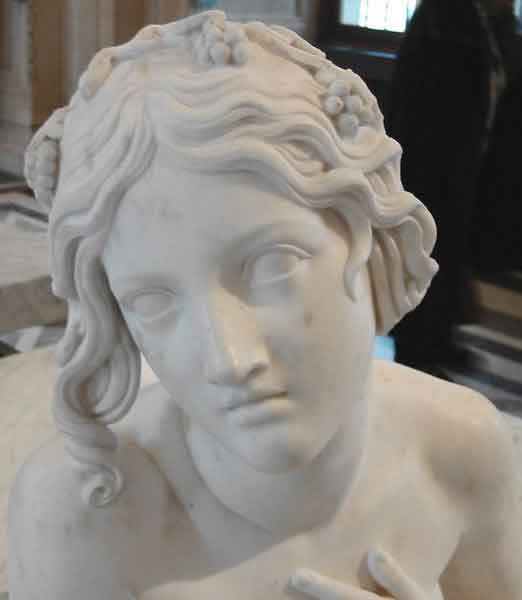Continuing the obsession with names and the stories behind them...
My eye only caught thirteen references to greek myth when reading Antigone, though I'm sure there are WAY more. While Zeus and Hades tallied up the most mentions, I decided to research more on the stories that threatened to go whizzing over my head (luckily, I caught some).
I take a look at five of those: Dirces, Niobe, Danae, Ares, and Hephaestus. And though there are other stories that continuously link with these names, I do my best to keep the focus on them.
Dirces: A figure dragged to death behind a bull after mistreating Antiope. Apparently, Dirces got changed into a stream after death - the stream that now symbolizes the city Thebes.
Niobe: A figure who boasted about having fourteen children in comparison to Leto's: Apollo and Artemis. The two then killed all but one of her children, resulting in Niobe taking her own life. Zeus, after her death, turned her into a stone - which is said to have wept in the summer months.
 Danae
Danae: After he received warning that her son would murder him, Danae's father locked her in a tower. She was visited by Zeus (who had feelings of attraction toward her) disguised as a shower of gold, impregnating her as it rained down. The son she bore, Perseus, would fulfill the prophecy and go on to kill her father.
 Ares
Ares:
The god of war and one of the twelve Olympian gods. A representative of conflict.
 Hephaestus
Hephaestus: God of fire and crafts. Being born lame, Hera threw him down from Olympus. He would exact revenge on her by ensnaring her on a throne. Noted for creating the armor of Achilles, Harmonia's necklace, and the woman, Pandora.
Greek myth makes up more than half the script, I'm guessing. It's definitely important to research your mythical figures before you perform any Greek play!
Works Cited
"Dirce" The Concise Oxford Companion to Classical Literature. Ed. M.C. Howatson and Ian Chilvers. Oxford University Press, 1996. Oxford Reference Online. Oxford University Press. Central Washington University. 29 October 2010
"Niobe" The Oxford Companion to World mythology. David Leeming. Oxford University Press, 2004. Oxford Reference Online. Oxford University Press. Central Washington University. 29 October 2010
"Danae" The Oxford Companion to World mythology. David Leeming. Oxford University Press, 2004. Oxford Reference Online. Oxford University Press. Central Washington University. 29 October 2010
"Ares" The Concise Oxford Companion to Classical Literature. Ed. M.C. Howatson and Ian Chilvers. Oxford University Press, 1996. Oxford Reference Online. Oxford University Press. Central Washington University. 29 October 2010
"Hephaestus" The Concise Oxford Companion to Classical Literature. Ed. M.C. Howatson and Ian Chilvers. Oxford University Press, 1996. Oxford Reference Online. Oxford University Press. Central Washington University. 29 October 2010






